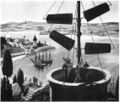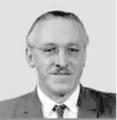Template:Selected anniversaries/March 2: Difference between revisions
Jump to navigation
Jump to search
No edit summary |
No edit summary |
||
| (34 intermediate revisions by the same user not shown) | |||
| Line 1: | Line 1: | ||
<gallery> | <gallery> | ||
|| | File:Title page of the Astrolabium of Johannes Engel, printed by Johann Emerich, Venice 1494.jpg|link=Johannes Engel (nonfiction)|1453: Doctor, astronomer, and astrologer [[Johannes Engel (nonfiction)|Johannes Engel]] born. He will publish numerous almanacs, planetary tables, and calendars. | ||
|| | File:Francesco_Bianchini.png|link=Francesco Bianchini (nonfiction)|1729: Astronomer and philosopher Francesco Bianchini dies. Bianchini was secretary of the Papal commission for the reform of the calendar, working on the method to calculate the astronomically correct date for Easter in a given year. | ||
File:Signaling by Napoleonic semaphore line.jpg|link=Semaphore telegraph (nonfiction)|1791: Long-distance communication speeds up with the unveiling of a [[Semaphore telegraph (nonfiction)|semaphore telegraph machine]] in Paris. | File:Signaling by Napoleonic semaphore line.jpg|link=Semaphore telegraph (nonfiction)|1791: Long-distance communication speeds up with the unveiling of a [[Semaphore telegraph (nonfiction)|semaphore telegraph machine]] in Paris. | ||
File:I_Got_Spaces.jpg|link=I Got Spaces|1931: Premiere of '''[[I Got Spaces]]''' by George Gershwin. "I got spaces / I got vectors / I got metrics / Who could ask for anything more?" | |||
File: | |||
File:Pioneer 10 construction.jpg|link=Pioneer 10 (nonfiction)|1972: The ''[[Pioneer 10 (nonfiction)|Pioneer 10]]'' space probe is launched from Cape Canaveral, Florida with a mission to explore the outer planets. | File:Pioneer 10 construction.jpg|link=Pioneer 10 (nonfiction)|1972: The ''[[Pioneer 10 (nonfiction)|Pioneer 10]]'' space probe is launched from Cape Canaveral, Florida with a mission to explore the outer planets. | ||
|| | File:Jordan Carson Mark.gif|link=J. Carson Mark (nonfiction)|1997: Mathematician [[J. Carson Mark (nonfiction)|Jordan Carson Mark]] dies. He oversaw the development of nuclear weapons for the US military, including the hydrogen bomb in the 1950s. | ||
</gallery> | </gallery> | ||
Latest revision as of 05:56, 2 March 2022
1453: Doctor, astronomer, and astrologer Johannes Engel born. He will publish numerous almanacs, planetary tables, and calendars.
1791: Long-distance communication speeds up with the unveiling of a semaphore telegraph machine in Paris.
1931: Premiere of I Got Spaces by George Gershwin. "I got spaces / I got vectors / I got metrics / Who could ask for anything more?"
1972: The Pioneer 10 space probe is launched from Cape Canaveral, Florida with a mission to explore the outer planets.
1997: Mathematician Jordan Carson Mark dies. He oversaw the development of nuclear weapons for the US military, including the hydrogen bomb in the 1950s.





